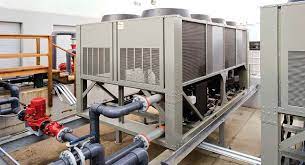
As the heartbeat of your organisation, a server room demands meticulous care to ensure the optimal functioning of your critical infrastructure. Overheating in this vital space can lead to hardware failures, decreased performance, and potential data loss. To safeguard against such risks, here are comprehensive tips to maintain a consistently cool server room. Read more!
1. Efficient Airflow Management:
Effective airflow is the cornerstone of a well-cooled server room. Arrange server racks in a hot-aisle/cold-aisle configuration, ensuring that hot air exhausts face one another while cool air intakes are aligned. This setup promotes a streamlined airflow pattern, preventing the recirculation of warm air and enhancing overall cooling efficiency.
2. Optimal Temperature and Humidity Settings:
Maintaining the right temperature and humidity levels is crucial. The American Society of Heating, Refrigerating, and Air Conditioning Engineers (ASHRAE) recommends a temperature range of 64.4°F to 80.6°F (18°C to 27°C) and a humidity range of 40% to 60%. Investing in a reliable temperature and humidity monitoring system allows for real-time adjustments, ensuring a stable environment for your servers.
3. Strategic Server Rack Placement:
Thoughtful placement of server racks can significantly impact the room’s temperature. Avoid positioning racks in proximity to external walls or windows, as these areas are prone to heat infiltration. Instead, place servers in the centre of the room, away from potential sources of warmth, and ensure there’s ample space between racks to facilitate proper airflow.
4. Implement a Chilling Solution:
Incorporating chillers into your server room’s cooling strategy can be a game-changer. A chiller is a refrigeration device that removes heat from the air or water, providing an effective means of cooling large spaces. By integrating a chiller system into your server room, you can efficiently regulate temperatures, especially during peak usage periods or in regions with elevated ambient temperatures.
5. Regular Equipment Maintenance:
Keep your servers running smoothly by adhering to a consistent maintenance schedule. Dust and debris accumulation on server fans and air vents can impede airflow, leading to increased temperatures. Regularly clean and inspect all server equipment to ensure optimal functionality and prevent unnecessary heat build-up.
6. Adequate Insulation and Sealing:
Ensure your server room is well-insulated to minimise heat transfer from external sources. Check for any gaps or leaks in the room’s structure that could compromise the cooling system’s efficiency. Proper insullation and sealing contribute to the containment of cooled air within the server room, preventing the intrusion of warmer air.
7. Emergency Cooling Solutions:
Be prepared for unexpected spikes in temperature by having emergency cooling solutions in place. Portable air conditioners or spot coolers can offer a quick and efficient way to address localised hotspots. These solutions provide a temporary fix while additional measures are taken to enhance the overall cooling infrastructure.
In conclusion, maintaining a cool server room is paramount for the longevity and reliability of your organisation’s critical infrastructure. By adopting these comprehensive tips, incorporating chillers where applicable, and staying vigilant with regular maintenance, you can ensure a consistently cool and efficient server room that supports the uninterrupted operation of your vital IT systems.